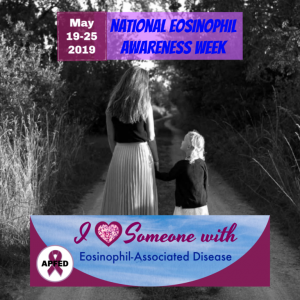Category: Family Stories

Camp Responsibilities: Establishing Protocols to Prevent and Respond to Food-Allergic Reactions
Published by Food Allergy Research & Education (FARE) on Jun 25, 2019
For the nearly six million children in the U.S. with food allergies, it’s important that camps have established food allergy policies. Food allergy reactions occur without warning and can even occur for the first time while a child, or even a staff member, is at camp.
Having a written food allergy policy in place ensures that staff members are well-equipped to care for anyone who may experience a food allergy reaction while at camp.
Camps should find out whether their state allows them to keep “stock” epinephrine on hand in case someone who has not been previously diagnosed with a food allergy has an allergic reaction. Camp staff should know where epinephrine is stored and be trained on how to administer it.
Creating a Camp Food Allergy Policy
Know about the availability of emergency care, including:
- how to contact emergency medical personnel/ambulance;
- how much time it will take for an emergency crew to arrive;
- how far it is to the nearest hospital; and
- if the hospital has a physician present at all times.
Note that camps in rural settings must understand that ambulance and emergency crews may be volunteers. These emergency situations may require additional plans and medications.
Review the health records submitted by parents and physicians.
- This includes the Food Allergy & Anaphylaxis Emergency Care Plan. Ask questions if you do not understand anything in these documents.
Establish prevention protocols for your camp.
- Be certain that all food service or kitchen personnel are aware of, and can identify, campers with food allergies.
- Discuss meal plans with parents and the camper. Make alternative plans if necessary.
- Plan how a camper with food allergies will take part in meals. For example, he or she might need to go first in a buffet line and at other food-related events to avoid cross-contact. Or, the camper might need to sit apart from other campers, in a special allergen-free space. In the latter case, try to have someone sit with the camper so he or she doesn’t feel excluded.
- Make sure that all staff can recognize the symptoms of an allergic reaction and know what to do if a reaction occurs.
- Maintain an appropriate sense of confidentiality and respect for individual privacy.
- Make sure the nurse has the required authorizations and appropriate medications to use in the event of accidental contact or ingestion.
Ensure that appropriate personnel are familiar with how to use epinephrine, where the medication is located and the camp protocol.
- Schedule a training session before the start of camp. Allow participants to become familiar with how to operate the different types of epinephrine auto-injectors.
- Comply with local and state regulations about the administration of medication.
Plan for field trips or offsite activities.
- Be certain any emergency medications and authorizations go with the camper and staff.
- On trips away from the camp, staff should always carry a communication device (e.g., cell phone, two-way radio).
- Some medications, such as epinephrine, become ineffective if exposed to temperature extremes (heat or cold) or light. Be certain that all personnel understand the importance of keeping medication protected.
For additional information and resources on creating a safe and positive experience for campers with food allergies, visit FARE’s camp web page.

Summer Travel Tips for Children with Special Needs
Published by Cathy Humphrey on Jun 05, 2019
- Planning
Whether you’re going on a day trip or a multi-day vacation of your dreams —planning is key! Where are you going? What will you be doing and do you need to make special arrangements? How long will you stay? What resources will you need (Special foods? Medical equipment? Vehicle rental? Accessible transportation between the airport and hotel?). brettapproved is a useful source for accessible hotels, restaurants, and entertainment venues.
American Airlines also has a program that was created for children with autism and other special needs. It’s Cool to Fly American is a mock travel experience where children and their families can experience the airport before traveling. The 3 ½ hour experience includes parking, check in, waiting at the gate, boarding a plane, taxing, returning to the gate, and retrieving their luggage. - Preparation
Making lists is necessary for a successful vacation, especially when traveling with people who have special feeding or other healthcare needs. Lists are part of planning and part of preparation. An itinerary that includes key contacts, phone numbers, and addresses is useful. A list of what to pack (you can make a list for each person traveling or just for the person with special healthcare needs) is very important—starting with items you can’t buy where you’re going, such as medicine and special foods. You can be as general or detailed as you need (toiletries and food OR 6 diapers and 4 pull ups per day x 8 days, 2 packets of x food, 3 packets of food, 2 spoons, 1 dish), but I find it helps the planning and preparation process to include every last item!
Preparation also includes being ready for “What if” questions. What if her g-tube falls out? (Include “spare g-tube” on list.) What if we can’t find pureed foods where we’re going? (Decide how many packets of food to bring or find nearby grocery stores.) What if he has a medical emergency and we need his latest scans or medical records? (Bring CDs of critical scans and usernames/ passwords for electronic medical records or put copies of important records in Dropbox, Google Folder, or other cloud-based location.) What if she needs to go to the emergency room? (Include the address to the nearest children’s hospital to your destination on your list.) And so on.
If you are going to Disney World, there is a discussion group on Facebook called Meals & Wheels in Disney World for people with questions about food allergies, wheelchairs, and pureed food. The creator of the group is a travel agent and has two kids with special healthcare needs. Preparation is a key component of a successful vacation. - Flexibility
Another key component is flexibility — especially when travelling with a person who has special healthcare needs. Like preparation, flexibility starts during planning and continues until you arrive back home. Let’s say you want to take your family on safari in Africa, but your child doesn’t travel well or you’re not sure if the menu has pureed foods to feed your child with pediatric feeding disorder. When you’re flexible, rather than seeing an obstacle, you see opportunities – bring your own food or a blender, talk with the travel company or the chef, go somewhere else, or start by driving up the road to a nearby wildlife or ammusement park! You may be comfortable with some flexibility in day-to-day activities, but it’s especially important when on vacation with a child that has special healthcare needs! - Sense of Humor
In addition to flexibility, having a sense of humor helps you have a successful holiday. When things happen on vacation – and they will – you have a choice: you can let it ruin your trip, or you can laugh about it. When the sixth person in a row tells you how to feed your child with PFD, or when the hotel room is so small you can’t fit the wheelchair inside, you can scream and rant or you can see it as a teaching opportunity. Explain what PFD is and why feeding your child is not the same as when they were feeding their children. Smile when you show the front desk clerk photos of your family member not being able to get in the room and ask for an upgrade. - Choose Love not Fear
Finally, when deciding whether or not to travel with a child that has special healthcare needs, choose love not fear. Go for it! Take that vacation! Heck, start small by going on a staycation, see how it goes and build from there. Going on a cruise is a great choice because they are typically very accessible (be sure to reserve an accessible cabin if someone in your party has a wheelchair) and the food choices are varied and flexible. All-inclusive resorts are also a good choice if you want a variety of activities and meals included without leaving the property. Car trips might be better than plane trips if you need to bring lots of equipment.
Whatever you do, don’t be afraid to go out and have fun because you’re fearful of what others might say or do, or that you won’t be able to find the right food or a changing station for your teenage child. Plan. Prepare. Try new things. Smile. Laugh. Make memories. Maybe we’ll see you out there!

NICU Graduates: On Track for Ongoing Feeding Success!
Published by Allyson Goodwyn-Craine on May 28, 2019
As each little feeder prepares to transition from our 20-bed, level III neonatal intensive care unit (NICU) to home, the interprofessional team assigns them one of three tracks to support their feeding skills progression. We do this as part of the rounds our team participates in together each day.
This approach helps monitor feeding as babies mature, provides prompt intervention when needed, and supports our ongoing goal of reduced hospital readmissions associated with feeding.
Here’s how each track works to support our smallest patients:
Third track infants receive the guidance of our nurses and lactation nurses to advance their feeding skills. These babies are monitored through our general outpatient pediatrics services after discharge. The pediatrician, dietitian, and lactation registered nurse (RN) monitor the infant’s feeding progress. A neonatologist also calls to check in with the family shortly after discharge. If feeding concerns arise, any of these providers can initiate a referral for an outpatient feeding evaluation with a speech-language pathologist skilled in pediatric feeding and swallowing evaluation and treatment.
Second track infants require a feeding plan generated by our NICU SLPs, occupational and physical therapists (OT/PT) to support their feeding skills. Prior to discharge, they also recommend an outpatient referral to an SLP for continued feeding evaluation. The outpatient SLP works in collaboration with the pediatrician, lactation RNs, and pediatric dietitians as the infant continues to mature.
These infants benefit from specific and evolving interventions after discharge such as special positioning, pacing, or use of a special bottle/nipple they may soon outgrow. We might also make this type of referral for ongoing outpatient services to families who need added support to learn how to provide ongoing feeding intervention and support.
First (or fast) track infants require advanced clinical feeding evaluation by the NICU SLP. These evaluations can include videofluoroscopic or modified barium swallow studies. We also make a plan for treatment to address highly complex medical or feeding concerns often associated with swallowing, craniofacial, cardiac, ongoing endurance, and respiratory conditions.
Keeping the same NICU SLP—who follows the infant throughout their NICU course and develops first-hand knowledge of their feeding progress—creates seamless continuity of care during the transition to an outpatient with this same clinician. The SLP makes an initial outpatient feeding appointment for the infant “on the fast track” prior to discharge.
Some infants receive this follow-up care as soon as three days post-discharge, while others can wait up to two weeks depending upon their needs. The NICU SLP continues to follow the infant for feeding as an outpatient as clinically indicated.
Additional means of monitoring feeding progress
Pediatricians, pediatric dietitians, lactation nurses, and outpatient SLPs are on the front line in working with our NICU graduates.
All disciplines, including the outpatient SLPs, can provide phone, video, or in-office appointments based on the infant’s ongoing needs. Our hospital provides two types of NICU follow-up clinics: One has a neonatologist who monitors progress in collaboration with the infant’s pediatrician. Our multidisciplinary NICU follow-up clinic provides a neonatologist, physical and occupational therapists, pediatric dietitian, social worker and NICU/outpatient SLP. This team monitors overall development and continues to educate and support the family.
Our low-birth-weight infants automatically quality for early intervention services. Anyone on the team can also generate early-intervention referrals when sensory, motor, or other developmental concerns are observed at any time along the way.
Our outpatient pediatric feeding SLPs also receive feeding evaluation referrals from a variety of sources outside the NICU. We work closely with inpatient speech-language pathology colleagues at our local children’s hospitals when infants transfer to our care. In addition, area pediatricians, family practice physicians, lactation RNs, dietitians, head/neck surgeons, and motor therapists do a great job of monitoring feeding progression and weight trajectory in order to direct infants our way anytime they require additional clinical feeding support.
It truly is a collaborative team effort to keep our smallest patients on track for feeding success!
Allyson Goodwyn-Craine, M.S., CCC-SLP, BCS-S, works in the neonatal intensive care unit and outpatient rehabilitation services at Sunnyside Medical Center in Portland, Oregon. She is also an adjunct professor at Portland State University and a guest lecturer at Pacific University.

Register Now: 2019 Virtual Town Halls
Published by Feeding Matters on May 21, 2019
Can you say EOSINOPHILIC? (E-O-sin-O-fill-ik)
Published by Feeding Matters on May 17, 2019
 The body’s immune system serves as its own internal ambulance, responding to crisis and triaging needs as they arise. Most times that rapid response works out just fine.
But sometimes, the immune system can turn on the body, or become a little too overzealous with its treatment to a perceived emergency, which can lead to other problems. An eosinophilic disorder is one of those.
Eosinophil-associated diseases are not only hard to pronounce, they are often difficult to diagnose due to a lack of awareness about the chronic digestive conditions. And that’s one of the reasons why National Eosinophil Awareness Week, held every year during the third week of May, is important.
At Feeding Matters, we’re acutely aware of how eosinophilic disorders impact the lives of those living with them, from children to adults. And we understand how challenging it can be to navigate, treat, and manage a chronic condition that affects eating and feeding.
Eosinophils are naturally-occurring white blood cells that, when they’re doing their jobs correctly, respond to allergy-triggering foods or allergens and release toxins to combat a reaction. But sometimes the body makes too many eosinophils.
When they build up, beyond the normal 5-percent volume of a person’s white blood cells, they trigger inflammation. And that leads to tissue damage.
Eosinophilic disorders are most often diagnosed in the esophagus, the stomach, the small and large intestines, or throughout the blood. Most eosinophilic disorders are endocrine or allergy-related and can affect the gastrointestinal, respiratory, and genitourinary tracts.
As one would expect, symptoms associated with eosinophilic disorders range based on where the inflammation and tissue damage is occurring. But, a number of common symptoms include difficulty swallowing, food getting stuck in the esophagus while eating, persistent heartburn, abdominal pain, vomiting, diarrhea, and nausea.
In children, eosinophilic disorders often result in a parent who experiences difficulty feeding and a child who has a difficult time eating. It is also noted that children who live with an eosinophilic disorder demonstrate a noticeable failure to thrive.
Due to the type of symptoms that come with eosinophilic disorders, it isn’t uncommon for those living with it to miss work or school.
While eosinophilic disorders are considered rare, it is an emerging problem worldwide and healthcare professionals are growing increasingly more aware of how the symptoms present themselves. Depending on the type of eosinophilic disorder, a diagnosis can come by way of a blood test, an endoscopy, or a biopsy of tissue. According to the American Academy of Allergy, Asthma and Immunology, physicians treat those diagnosed with an eosinophilic disorder by using a food elimination diet, corticosteroid medication to treat inflammation, and proton pump inhibitors to treat acid production in the stomach.
To learn more about eosinophilic disorders, how they impact the lives of those living with them, and how to manage chronic conditions associated with them, the American Partnership for Eosinophilic Disorders is a great resource.
The body’s immune system serves as its own internal ambulance, responding to crisis and triaging needs as they arise. Most times that rapid response works out just fine.
But sometimes, the immune system can turn on the body, or become a little too overzealous with its treatment to a perceived emergency, which can lead to other problems. An eosinophilic disorder is one of those.
Eosinophil-associated diseases are not only hard to pronounce, they are often difficult to diagnose due to a lack of awareness about the chronic digestive conditions. And that’s one of the reasons why National Eosinophil Awareness Week, held every year during the third week of May, is important.
At Feeding Matters, we’re acutely aware of how eosinophilic disorders impact the lives of those living with them, from children to adults. And we understand how challenging it can be to navigate, treat, and manage a chronic condition that affects eating and feeding.
Eosinophils are naturally-occurring white blood cells that, when they’re doing their jobs correctly, respond to allergy-triggering foods or allergens and release toxins to combat a reaction. But sometimes the body makes too many eosinophils.
When they build up, beyond the normal 5-percent volume of a person’s white blood cells, they trigger inflammation. And that leads to tissue damage.
Eosinophilic disorders are most often diagnosed in the esophagus, the stomach, the small and large intestines, or throughout the blood. Most eosinophilic disorders are endocrine or allergy-related and can affect the gastrointestinal, respiratory, and genitourinary tracts.
As one would expect, symptoms associated with eosinophilic disorders range based on where the inflammation and tissue damage is occurring. But, a number of common symptoms include difficulty swallowing, food getting stuck in the esophagus while eating, persistent heartburn, abdominal pain, vomiting, diarrhea, and nausea.
In children, eosinophilic disorders often result in a parent who experiences difficulty feeding and a child who has a difficult time eating. It is also noted that children who live with an eosinophilic disorder demonstrate a noticeable failure to thrive.
Due to the type of symptoms that come with eosinophilic disorders, it isn’t uncommon for those living with it to miss work or school.
While eosinophilic disorders are considered rare, it is an emerging problem worldwide and healthcare professionals are growing increasingly more aware of how the symptoms present themselves. Depending on the type of eosinophilic disorder, a diagnosis can come by way of a blood test, an endoscopy, or a biopsy of tissue. According to the American Academy of Allergy, Asthma and Immunology, physicians treat those diagnosed with an eosinophilic disorder by using a food elimination diet, corticosteroid medication to treat inflammation, and proton pump inhibitors to treat acid production in the stomach.
To learn more about eosinophilic disorders, how they impact the lives of those living with them, and how to manage chronic conditions associated with them, the American Partnership for Eosinophilic Disorders is a great resource. FAACT(S) About Food Allergies
Published by Feeding Matters on Apr 26, 2019
Millions of people live with food allergies and the guessing game that comes with diagnosing them and avoiding the foods that trigger a reaction.
It’s a well-documented struggle for adults who are able to communicate their symptoms and track their reactions to certain foods. But, it can be an exponentially more difficult road when parents are relying on a child to try and verbalize reactions that can’t be seen, such as respiratory difficulties and gastrointestinal issues.
One of more than 300 conditions that put children at a higher risk for pediatric feeding disorder, food allergies can often be misconstrued as an intolerance to a certain food, general pickiness or other chronic conditions by those who don’t fully understand the gravity of the condition. That’s part of the reason why Feeding Matters so appreciates Food Allergy Awareness Week, recognized May 12-18. It allows for an opportunity to educate the public and it offers a space for conversations, tolerance and understanding.
An estimated 6 million children are living with food allergies in the U.S., according to the Food Allergy and Anaphylaxis Connection Team (FAACT). And, only eight foods are responsible for 90% of all food allergies, according to FAACT. Statistics reported by the Journal for the American Medical Association indicate that shellfish, milk and peanuts are the top-three most common culprits of food allergies, followed by tree nuts, fin fish, eggs, wheat, soy and sesame.
Someone who lives with a food allergy can suffer a number of reactions, ranging from a rash to severe respiratory distress. In fact, experts estimate that a food allergy sends someone to an emergency room once every three minutes. And, the situation seems to be escalating in recent years.
Anaphylactic reactions have increased nearly 400 percent over a 10-year period between 2007 and 2016, and about 40 percent of children living with food allergies experience a severe and sometimes anaphylactic reaction, according to Food Allergy Research and Education (FARE).
Those who are forced to navigate life with a food allergy are also required to maintain a pretty consistent state of vigilance. That’s one of the reasons that schools place restrictions on the types of treats that can enter a classroom, and why some airlines have stopped serving peanuts as mid-flight snacks.
Knowing that trace amounts of an ingredient or cross-contamination could trigger a reaction, most people living with food allergies are advised to avoid buffets and deli stations, bakeries, ethnic restaurants because of potential language barriers, and Asian cuisine due to its liberal use of peanut-based foods and oils.
It is, however, possible to eat out with a food allergy. As awareness of the condition improves, so too does general tolerance for it and those who live with it. Restaurants are increasingly providing allergy information on their menus, and relationships with servers and restaurant owners make those conversations easier to have.
For more information about food allergies, we encourage you to visit these resources:Food Allergy and Anaphylaxis Connection Team
Food Allergy Research and Education
Kids With Food Allergies
CONGENITAL HEART DISEASE + PEDIATRIC FEEDING DISORDER
Published by Renee Bergeron on Feb 15, 2018
For February, a time known for American Heart Month, National Wear Red day, and Valentine’s Day, Feeding Matters welcomes guest contributor Renee Bergeron, author of Little Earthling Blog. A mom of 14, Renee always dreamed of a peaceful home full of little feet, days spent on a lovely piece of property with a lush organic garden to supply our family’s needs. Instead, she “ended up with real, live children who often interrupt me, a black thumb and hunk of property that no one has time to keep up with.”

When our son, Apollo, was diagnosed with a heart defect at 18 months old we weren’t shocked we were relieved. Apollo had been suffering from mysterious symptoms that puzzled the doctors. He had failure to thrive, loud, raspy breathing and poor sleep. He had already had his adenoids removed which had not improved his sleeping, eating, or breathing as the doctors had predicted.
After a severe choking incident a MRI was ordered. That day we were told our son had a double aortic arch, a type of vascular ring. We were immediately plunged into the world of congenital heart defects. We were told he would need just a single, non-invasive surgery to repair the ring. We were told to expect a full recovering, immediate improvement in his eating and gradual improvement with his breathing.
But it didn’t happen that way.
Apollo’s first meal after his surgery was a success! He downed waffle pieces, a bit of egg, and some canned peaches. But by the time we were home two days later, his feeding issues were back. Apollo wanted to nurse constantly. Even though he was now 22 months old, he barely ate solid foods. Getting two or three bites in was a “good” meal. He grabbed at the food he saw on the table, would take a bite, and cry. I ended up spending most of my day nursing and trying to get bits of food into him.
Apollo had struggled to eat from birth. Initially we thought he was sleepy from his c-section birth. Then, at two weeks old, he had his tongue tie clipped. He still struggled. We took him to the doctor again and again. At ten months old we took him to a children’s hospital where we were told he had severe reflux and was allergic to milk. We stopped all milk products, added in meds for reflux, and he still lost weight. He was tested for celiac and cystic fibrosis. Both came back negative, so we continued to struggle. At 10 months old Apollo was hospitalized with RSV and pneumonia. But none of that explained his eating issues. By his first birthday he was skinny, fussy, and still dropping off the growth curve.
That is why, when he was diagnosed with congenital heart defect (and a “simple” one at that) we were relieved. But our story didn’t end after his “non-invasive” surgery. Six weeks after his surgery to divide the ring, he was in the hospital again where, over a five day period, a slew of tests were run on our curly-haired toddler. An Upper GI finally revealed an answer to his feeding struggles. The vascular ring had left a diverticulum (pocket of blood) that was compressing his esophagus. That same day we made the decision to have a feeding tube placed and a week later the surgery was done.
We never gave up on our son being able to be tube-free. Our immediate concern was to help him gain weight and get “full” after a feeding for the first time in his life. Adjusting to life with a tube-fed toddler wasn’t easy but we did it. I made it my personal goal to never have a day pass without him eating something orally.
We were told Apollo might have a feeding tube for the rest of his life. So we adjusted our expectations. We bought a large, sturdy stroller to take him hiking and camping. We tube-fed him where ever we happened to be. We were determined that he would not miss out on life.
Eventually, it took two more surgeries, a year of feeding therapy, patience and prayers, but at age six-and-a-half, and midway through first grade, our son had his feeding tube removed.
Today Apollo is a healthy seven-year-old who loves LEGO, books, pizza, chips, and ice cream.
* * *
If you have a child with pediatric feeding disorder, feeling overwhelmed is not unusual. Feeding Matters is committed to providing parents with the support and resources they need to deliver the best care to their children, including our parent-to-parent coaching program and on-demand knowledge center.
For more information about CHD, please visit the American Heart Association’s page on congenital heart disease.
THE POWER OF TWO
Published by Feeding Matters on Mar 21, 2018
Parents of infants and children with pediatric feeding disorder may feel isolated and overwhelmed with the medical, emotional, financial, educational and social issues they face as they raise their child. In today’s video blog, Pinali Agrawal tells her experience with the Power of Two program. “It literally opened up a whole different world to me. I had been searching for such a long time, since my son was born, to try to find a group,” Pinali describes. “I was so thankful to find Feeding Matters and the Power of Two.”
VIDEO BLOG: MEET LUCY
Published by Feeding Matters on Jun 25, 2018
At about six months old, Lucy’s parents, Garrett and Jake, decided to begin feeding her simple solid foods like rice cereal and formula. To her parent’s surprise, the first time Lucy tried solid food she screamed and resisted. The only way to calm her was to completely remove the food from her mouth. And this was just the beginning.
VIDEO BLOG: MEET HADYN
Published by Feeding Matters on Jul 09, 2018
Pediatric feeding disorder effect every area of a child’s development, including their social, emotional, physical, and mental well-being. Today, you will meet Hadyn, who was born with a chromosome disorder called 18 Q Deletion. Hadyn’s mother knew his disorder came with complications, including hearing loss, visual impairment, and developmental delays. However, she did not expect feeding Hadyn would be so difficult.